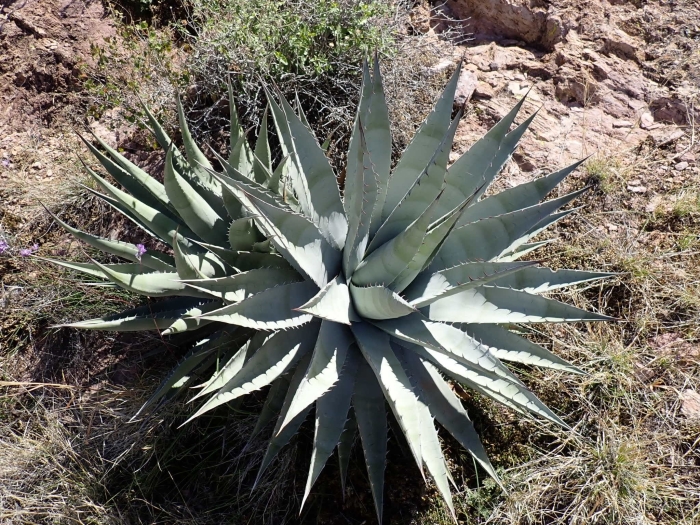Desert Agave
(Agave simplex)
Desert Agave (Agave simplex)
/
/

John Brew
CC BY 4.0
Image By:
John Brew
Recorded By:
Copyright:
CC BY 4.0
Copyright Notice:
Photo by: John Brew | License Type: CC BY 4.0 | License URL: http://creativecommons.org/licenses/by/4.0/ | Rights Holder: John Brew | Publisher: iNaturalist | Date Created: 2019-03-22T17:36:38Z |






































Estimated Native Range
Summary
Agave simplex, commonly known as Desert Agave, is an evergreen succulent native to arid regions, including the coastal and desert scrublands of Baja California and Northwest Mexico. It typically grows to a height of 3 feet (0.9 meters) and a width of 2 feet (0.6 meters). The plant forms a rosette of fleshy, spiny-edged leaves that are blue-green in color, and during its flowering period, which occurs once at the end of its life cycle (monocarpic), it produces a tall stalk with clusters of yellow flowers that are attractive to pollinators such as bees and hummingbirds.
Desert Agave is valued for its drought tolerance and architectural form, making it a popular choice for xeriscaping, rock gardens, and as a focal point in water-wise garden designs. It is also used in the production of agave nectar and tequila, although it is not the primary species for commercial production. When cultivating Desert Agave, it is important to provide full sun and well-draining soil to prevent root rot. It is also cold-sensitive and should be protected from frost. While generally low-maintenance, it can be susceptible to agave snout weevil infestation, which can be mitigated by proper care and monitoring.CC BY-SA 4.0
Desert Agave is valued for its drought tolerance and architectural form, making it a popular choice for xeriscaping, rock gardens, and as a focal point in water-wise garden designs. It is also used in the production of agave nectar and tequila, although it is not the primary species for commercial production. When cultivating Desert Agave, it is important to provide full sun and well-draining soil to prevent root rot. It is also cold-sensitive and should be protected from frost. While generally low-maintenance, it can be susceptible to agave snout weevil infestation, which can be mitigated by proper care and monitoring.CC BY-SA 4.0
Plant Description
- Plant Type: Succulent
- Height: 1-2.5 feet
- Width: 1.5-3 feet
- Growth Rate: Slow
- Flower Color: Yellow
- Flowering Season: Summer
- Leaf Retention: Evergreen
Growth Requirements
- Sun: Full Sun
- Water: Very Low, Low
- Drainage: Fast
Common Uses
Bee Garden, Bird Garden, Butterfly Garden, Drought Tolerant, Fire Resistant, Hummingbird Garden, Low Maintenance, Rabbit Resistant, Rock Garden
Natural Habitat
Coastal and desert scrublands of Baja California and Northwest Mexico
Other Names
Common Names:
Scientific Names: , Agave deserti var. simplex, Agave deserti subsp. simplex, Agave simplex,
GBIF Accepted Name: Agave deserti var. simplex (Gentry) W.C.Hodgs. & Reveal